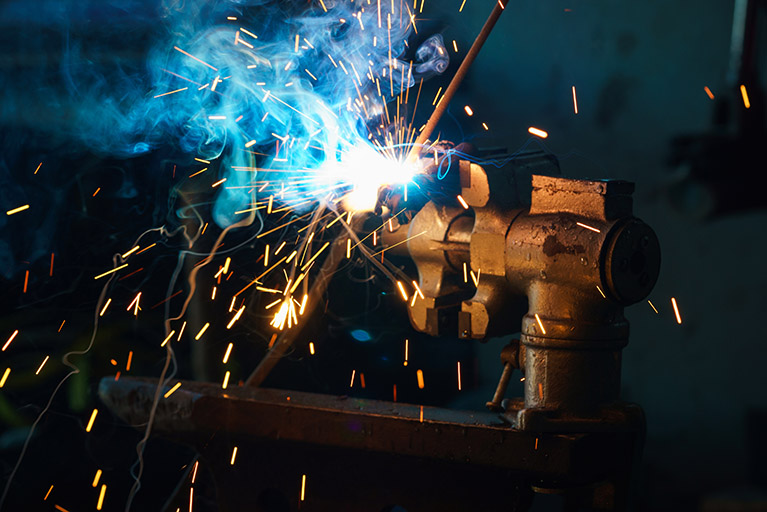Welding is a manufacturing process in which materials, usually metals or thermoplastics, are bonded using high temperature to melt parts and cool them down, causing melting. Welding differs from methods of joining metals at lower temperatures, such as brazing and brazing, which do not melt the base metal.
In addition to melting the base metal, a filler material is usually added to the joint to form a pool of molten material (weld pool), which is cooled, forming a joint, which, depending on the configuration of the weld (joint, full penetration, fillet joint, etc.), can be stronger than the base material (base metal). Pressure can also be used in combination with heat or by itself to create a weld. Welding also requires a shield shape to protect the filler or molten metals from contamination or oxidation.
In addition to melting the base metal, a filler material is usually added to the joint to form a pool of molten material (weld pool), which is cooled, forming a joint, which, depending on the configuration of the weld (joint, full penetration, fillet joint, etc.), can be stronger than the base material (base metal). Pressure can also be used in combination with heat or by itself to create a weld. Welding also requires a shield shape to protect the filler or molten metals from contamination or oxidation.
Many different energy sources can be used for welding, including gas flame (chemical), electric arc (electric), laser, electron beam, friction and ultrasound. Although it is often an industrial process, welding can be performed in many different environments, including outdoors, underwater and in space. Welding is a hazardous activity and precautions must be taken to avoid burns, electric shock, eye damage, inhalation of toxic gases and vapors, and exposure to intense ultraviolet radiation.
Until the end of the 19th century, the only welding process was forge welding, which for thousands of years blacksmiths had used to join iron and steel by heating and hammering. Arc welding and oxyfuel welding were some of the first processes developed at the end of the century, and resistance welding followed soon after. Welding technology developed rapidly in the early 20th century as world wars created a demand for reliable and inexpensive joining methods. After the wars, several modern welding methods were developed, including manual methods such as shielded metal arc welding, currently one of the most popular welding methods, as well as semi-automatic and automatic processes such as gas submerged arc welding. , submerged arc welding. arc welding and electroslag welding. Development continued with the invention of laser welding, electron beam welding, magnetic pulse welding and friction stir welding in the second half of the century. Today, as science continues to advance, robotic welding is common in industrial environments, and researchers continue to develop new welding techniques and better understand welding quality.
Some of the most common current welding methods are.
- Shielded metal arc welding (SMAW), also known as “stick welding.”
- Gas tungsten arc welding (GTAW), also known as TIG (tungsten, inert gas).
- Gas metal arc welding (GMAW), also known as MIG (metal, inert gas).
- Flux-cored arc welding (FCAW), very similar to MIG.
- Submerged arc welding (SAW), usually called Sub Arc.
- Electroslag welding (ESW), a highly productive process for thicker materials.


